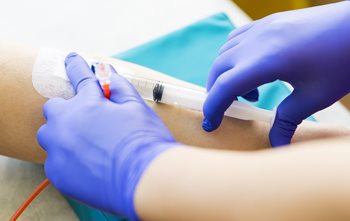
Nursing Management of Stroke Patients: A Lifesaving Role
Stroke is a leading cause of death and long-term disability, affecting nearly 800,000 individuals annually in the United States alone. Timely recognition and effective management are critical—and nurses are at the frontline of this urgent care. From the moment a stroke is suspected through the patient’s acute treatment, recovery, and rehabilitation, nursing management plays a pivotal role in improving outcomes and saving lives.
The Nurse's Role in Stroke Recognition and Response
The nursing management of stroke begins with keen assessment skills. Nurses must quickly recognize stroke symptoms such as sudden confusion, weakness on one side, difficulty speaking, or changes in vision. Utilizing tools like the NIH Stroke Scale (NIHSS) and acting promptly to initiate the organization’s stroke alert process ensures rapid medical intervention—often making the difference between full recovery and lifelong disability.
Acute Stroke Management in the Hospital Setting
Once a stroke patient enters the emergency or acute care setting, nurses take on multiple responsibilities:
- Monitoring neurological status using standardized assessments.
- Managing airway and respiratory function to prevent complications.
- Assisting with or administering thrombolytic therapy when appropriate.
- Maintaining hemodynamic stability and monitoring for signs of intracranial pressure.
- Providing emotional support to patients and families during this critical time.
Collaboration with the stroke team—including physicians, radiologists, and therapists—is essential for implementing evidence-based protocols that align with national stroke guidelines.
Stroke Recovery and Rehabilitation
After the acute phase, nurses shift their focus to rehabilitation and secondary prevention. Patient and family education becomes key—teaching about lifestyle modifications, medications, stroke warning signs, and how to prevent future strokes. Nurses also coordinate with physical, occupational, and speech therapy teams to support patient progress.
Stroke Education: A Mandate for Quality Care
Given the complexity and urgency of stroke care, continuing education is not optional—it’s essential. According to current standards:
- Eight hours of annual stroke-specific continuing education is required for staff who comprise the CORE stroke team.
- At least 80% of Emergency Department staff must be educated in stroke pathophysiology, presentation, assessment, diagnosis, and treatment, including thrombolytic therapy.
- Non-stroke unit nurses and ancillary staff must be trained in recognizing stroke signs and symptoms and activating the emergency response process.
This level of education ensures that all healthcare staff—from ED nurses to support personnel—can respond swiftly and appropriately when every second counts.
Advance Your Stroke Knowledge with Pedagogy Continuing Nurse Education
Whether you are a member of a dedicated stroke team, an ED nurse, or work in a setting where stroke patients may present occasionally, keeping your stroke education up to date is vital. Pedagogy Continuing Nurse Education offers two comprehensive stroke-related CEU/CNE courses tailored to various levels of experience:
- Stroke: An Introduction: Perfect for those new to stroke care or in need of a refresher, this course covers basic stroke types, pathophysiology, and symptom recognition.
- Stroke Management Advanced: Designed for experienced nurses, this course dives into acute management protocols, rehabilitation strategies, and complex case considerations.
Empower yourself with the knowledge needed to make life-saving decisions. Enroll today and ensure you’re equipped to meet both clinical demands and regulatory requirements in stroke care.

